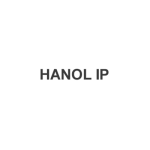The Korean Patent Act has been revised twice in the year 2016 and the revisions are quite substantial. Some of the new revisions will become effective from June 30 2016 and others from March 1 2017. The major revisions include the following:
From June 30 2016, more official fees are subject to refund. Further, in a patent infringement lawsuit, the scope of a court's authority to enforce document production has been enlarged. If a party resists the court's order to produce a document, it would put the resisting party at a severe disadvantage as the court may acknowledge the other party's assertion regarding the contents of the document as well as facts to be proved by the document.
From March 1 2017, the timeframe to request examination will be shortened from five years (current) to three years. In addition, a new ex-officio re-examination system will be introduced. A new court action will also be available to transfer the ownership of a patent owned by an improper proprietor to the true owner. Perhaps the most important change for the 2016 revision is the adoption of a new patent cancellation system.
Under the current Patent Act, anyone may file a patent invalidation action at any time after patent registration, until three months from the publication date of the registration. If the petitioner is an interested party, he may bring the action at any time, even after the patent has expired. Until the 2016 revision, this was the only possible way a third party could challenge the validity of an issued patent. However, starting from March 1 2017, a patent may be challenged through a different route: the patent cancellation system.
According to the Korean Patent Office, the new patent cancellation system was enacted in order to improve quality of examination. In Korea, a system exists in which a third party may present evidence concerning the patentability of pending applications to prevent grant of an unqualified patent. However, as the examination period has been substantially reduced recently, the portion of patents granted before laid-open publication has increased to nearly 40% of total patents (for reference, patent grant before laid-open publication increased from 20.2% in 2011to 39.7% in 2014. For these 40% of patents, the public never had an opportunity to present third party observations.Therefore, the main purpose of the system is to compensate this loss and thus give the public an opportunity to challenge the validity of a patent in an easy, speedy and less costly way.
Under the new cancellation system, any person may request a cancellation of a granted patent within six months from the date of patent publication. Grounds for cancellation are limited to issues of novelty, inventive step and double patenting based on the prior art. However, a challenger cannot request a cancellation based on the prior art that the examiner already cited during the patent examination. Unlike an invalidation action, the cancellation will be an ex parte procedure. Once the proceeding is started by the request of challenger, further proceeding will continue between the patentee and KIPT. If KIPT finds reasons to cancel the patent, the patentee will be given an opportunity to submit a written opinion and to request correction of a specification.The scope of correction at this stage will be limited to certain ranges.
In order to maintain a speedy and efficient procedure, the cancellation process will be decided on written brief only, not by an oral proceeding. In the cancellation proceeding, after reviewing the case, KIPT will issue either a decision to cancel or decision to maintain the validity of a patent (that is, a decision to dismiss the request).The patentee may file an appeal to the Patent Court, in regard to the decision to cancel the patent. In contrast, the challenger cannot appeal the decision of maintaining the validity of a patent. In this situation, the challenger's only available recourse will be to file an invalidation trial with KIPT.
Starting from March 2017, the patent cancellation and patent invalidation systems will co-exist in Korea. The two systems share the ultimate goal of abolishing granted patents, but have many different aspects. Comparison of two systems is summarized in the table. Challenging a patent is an important part of business strategy in technology-based industry. Now, interested parties will have more options in Korea than previously, which will hopefully be used proficiently.
Cancellation v Invalidation (March 1 2017) |
||
Cancellation |
Invalidation |
|
Who |
Anyone |
Interested party only |
When |
Within 6 months from the publication of patent |
Anytime after registration of a patent |
Grounds |
Limited (novelty, inventive step, double patenting) |
Novelty, inventive step, double patenting, description requirement, etc. |
Correction of specification |
Once |
No limit |
Proceedings |
Ex parte In principle, documentary review only |
|
Appeal |
Appeal to the Patent Court when the patent is cancelled----Appeal impossible when the request is dismissed |
Both parties may appeal to the decision to the Patent Court |
Min Son
Partner, Hanol IP & Law
HANOL Intellectual Property & Law
6th Floor, 163, Yang Jae Cheon-Ro, Gang Nam-Gu
Seoul 06302, Republic of Korea
Tel: +82 2 942 1100
Fax: +82 2 942 2600












